Three weeks ago, I found myself sitting on the banks of Hudson Bay, a stone’s throw from the Arctic circle, waiting for a polar bear to wake from his slumber. One can wait a long time for a polar bear to awaken. Several times, our group of photographers asked whether we should move on, and several times the answer was, “You don’t leave a bear to go look for a bear.” Solid wisdom, that. But no matter what you’re photographing, it’s always a gamble that it will pay off. One of the questions I’m most often asked is this:
“So, how long do you wait? When do you cut your losses and move on?”
That, right there, is the question, and there’s no good (or easy) answer. Whether you’re sitting on a street corner in Italy or waiting for an anticipated moment to happen at an event, there’s always the chance that what you’re waiting for might never happen—and that the waiting might prevent you from being elsewhere, photographing something your imagination tells you is probably some kind of once-in-a-lifetime magic. The fear of missing out on something somewhere is a tough one to shake. I wish I could say, “Go with your gut,” but I seem to have two guts: one that’s impulsive and impatient and just wants to move on, and one that’s quieter and wiser and knows from experience that more often than not waiting pays off.
If you’ve got great light but nothing’s happening, don’t leave great light to find great light. If you’ve got a great background and a wonderful composition, don’t leave that to find it elsewhere. If you’ve got a bear, don’t leave it to find a bear. That will almost always be my approach. But there’s a catch: it takes time.
Finding great light takes time the same way finding a bear or a great background or composition does. Leaving that to begin the search all over again takes even more time. And once you get there and you do find what you think you’re looking for, it takes more time to truly see the scene, discover the possibilities, try out the compositions, and begin to anticipate the moments. It takes time to get the settings dialed in, to be creative, and to try different approaches.
Does waiting always pay off? No.
I’ve sat for hours thinking, “If this pays off, it’s going to be amazing. But if the light never pops, if the moment never comes, it’s going to be, well, nothing. Zip. Nada.” In that frame of mind, it’s easy to start thinking about moving on. What makes it possible to stay put and to throw your lot in with the kind of luck that’s at least partly responsible for the best photographs we make is time.
We spend a great deal of attention on thinking about the things we need to make our best photographs. Money, too. We buy the best gear we can, the sharpest lenses we can afford, the biggest tripods, the fastest strobes, or whatever your own particular niche discipline demands. We believe these are necessary, and we spend what we can on them. Certain gear opens creative possibilities that not having that gear might prevent. When I was looking at polar bears through my 600mm lens with a 1.4x teleconverter in Churchill, I was able to create compositions that other photographers with only a 200mm lens could not. A camera that is faster and tracks better will capture moments a slower camera might not.
This is also true of time, and as I slide into my 36th year as a photographer, I’m more and more convinced that we need more of it and that we generally undervalue its role in picture-making. What do you need to make great photographs? The right gear is necessary but insufficient. We need more time.
The more time you make for whatever you’re photographing, the more possibilities you have.
More time means you can wait for the bear without freaking out. It means you’ve got more time to consider your composition. It means you’ve got time to make mistakes, take some risks, and come back tomorrow when the anticipated light fizzles over that landscape instead of popping the way you hoped. More time, no matter what the context, allows you to be more present, more attentive, and more immersed.
Practically speaking, this means going to Venice for two days instead of one, and if you can pull it off, going for a whole week. It’s so tempting to want to see it all, to go to Venice, Rome, and Florence in five days. That might be a great way to sightsee, but it’s a tough way to photograph. It means if you can spend an hour in the studio, carve out time for two hours and allow yourself to slow down, and use that time to try new things. If you can spend a week on safari, see if there’s a way to spend two. If you can put a month into your project, budget for three instead. If you’re doing a one-hour hike, linger for the whole morning instead, or come back every morning for a week to the same forest at different times of the day.
More time means more possibilities.
More time can solve a lot of problems. It can solve “there’s nothing happening!” It can solve “how long should I wait?” It can solve “the light’s not right,” and “I missed the shot that time,” or “shoot, my settings weren’t right.” More time allows you to try again, to wait without (as much) worry, and to see a place or a subject as different light, weather, and moments change it. When you want to photograph people, more time allows you to stop feeling so nervous and for your subject to go back to being more comfortable and natural. It allows for deeper connections and the kind of relationships you can’t have on the run.
Want to make better photographs? Take more time. Find it, make it, trade other things for it.
Time isn’t a technique. It’s not a shortcut. And it’s not as sexy as that new lens. In fact, it might cost more than that new lens. But if you can only have one, rent the lens and buy the time.
For the Love of the Photograph,
David.
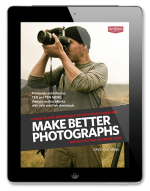
PS – Want more like this? I send these articles out every two weeks to photographers around the world who want to improve their craft and explore their creativity and I’d love to include you. Tell me where to send it and I’ll send you a copy of my best-selling eBook Make Better Photographs, as well bi-weekly articles, first-glimpse monographs of my new work, and very occasional news of resources to help you keep moving forward in this craft we love.
“Each and every one of your emails inspire and motivate me to want to jump right out of my chair away from my computer and shoot for the love of it . Thank you David.” – Millie Brown

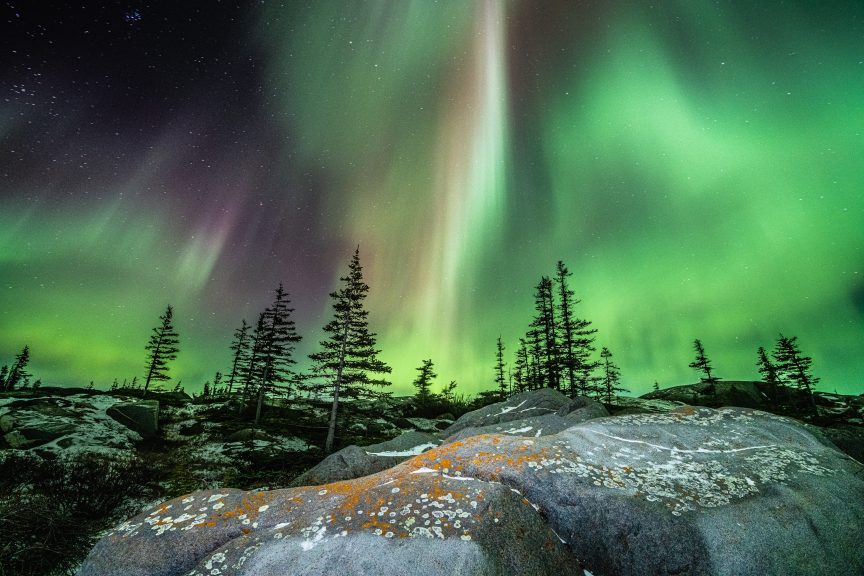
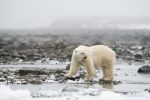




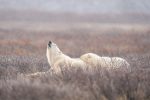
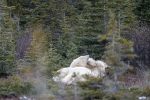
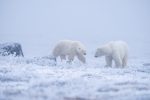
Comments
Pingback: For Stronger Photographs: More Time - Ahmed blogs
This is a constant struggle for me. Intellectually I know spending more time is better for my photography but I always battle the FOMO. I like to be on the move when I’m creating photography and I think part of that is FOMO. But I’m working harder to bank time and commit more time to get the shots I really want even if that means there are days I don’t end up creating anything.
Sincerely,
Kyle Reynolds
https://krnaturalphoto.com/
Your photographs look great. It inspired all the beginners who want to make a career in this industry. Thanks for sharing these collections of pictures.
The monograph, NORTH, is absolutely breathtaking! Thank you!
Taking more time is by far one of the best suggestions. It may not always pay off, but when it does, I am always amazed. The difficulty can be overcoming the need to shoot more. More variety. More locations. More subjects. Sometimes “more” can be like a disease and rob me of the gift of now. It can rob me of witnessing what is about to unfold right in front of my eyes. Sometimes nothing unfolds, however, it slows me down. It allows me to keep my head where my feet are. Here and now. That’s one of the reasons I prefer to shoot alone so I am not pulled by someone else’s need for more.
Thanks, David! It’s always a pleasure to take in what you have to say. You provide a lot of value. It is appreciated.
Time!! I remember during my working life attending many time management workshops where we were taught to cram more things into a given amount of time. As I got older I slowly realised these time management gurus had got it all arse-up and back to front. We should actually be doing less – and doing fewer things well. Its much better for both physical and mental health.
I am now content to wait during my photography. There is always things to look at during the wait, and lots of contemplation time. More often than not I will find other, smaller more intimate, things to photograph while waiting for the light. And I have found that people often prefer these more intimate photos. I love being immersed in my surroundings and just being present – as long as its quiet. At age 75 I have recently been diagnosed with autism – now I understand why I hate noise and rushing around!
David, thanks for these blogs. I really look forward to them.
Cheers,
Bruce.
This is so on point, Bruce. We should be doing less. Or more with the time we have, and by more I mean the real stuff, the significant stuff, among which I count waiting, being present, and not frantically rushing about. We accomplish so little when we rush and hurry, don’t we? Thanks for reading, Bruce. People like you are why I do what I do.
Another wonderful post, David, followed up by wonderful comments. This blog and the people who frequent it, stand like a shining beacon for how things could and indeed should be on the internet.
Taking time, making time, when the clock of your life is ticking is a skill and a blessing.
SO. MUCH. TO. DO. MUST. SQUEEZE. IT. ALL. IN.
The tribulations of a temporal man with eternity written in his heart.
Wow, thanks for that, Gavin. This line kills me: “The tribulations of a temporal man with eternity written in his heart.” Indeed.
Always a thanks for your posts and insightful words! I always silently *chuckle* when I hear so many people voice the ubiquitous response to the general question – “What do you wish you had more of?” It’s the respectful and relatively experienced soul that acknowledges ‘time’ merits thoughtful consideration; perhaps second only to one’s health (and taking care of themselves: physically and mentally).
Thanks – your words have consistently allotted the motivation for me to pick up the camera time and again when I’ve drifted off-track . . .
Geno
David – Thank you for yet another beautiful, soulful monograph. I really can’t put into words how touching these are. It must have been wonderful to be out there again. It’s usually hard for me to look at polar bears without great sadness because of what they’re up against; it’s just so nice to see some simple, lovely images of them living their lives. These are SO good.
Thank you,
Sharon
You just made my Day, Sharon, thank you! Just knowing that people like you are enjoying these monographs makes me want to make more of them! Thanks for such kind encouragement. 🙂
I really enjoy your inspirational writing!
Not specifically on this post but related “enough” – was out for a short photography session yesterday afternoon. It was cold and a couple of times I had turned to walk back to my car, and stopped and turned back to what I was photographing with the feeling that I hadn’t finished yet. I was right both times – and the second time I was about to put my lens cap on and REALLY be done with the afternoon. Thanks to you, that “nudge” to take a second look at the scene instead of just taking 2-3 shots and calling it done led to a photo I really like.
Thanks, Vickie! I am constantly amazed that (a) I hear this same story over and over again, in fact I LIVE this same story over and over again and yet (b) I continue to need to be reminded of this myself. Seems most of us need to learn things the hard way. 😉
Pingback: The Value Of Time | Tom Dills Photography Blog
Howdy David, funny how things happen. Yesterday while out with some photo buddies we were hanging out in tall sagebrush waiting for the light and group of moose to melt out of the overnight fog. The chili night and high humidity were icing up my bones. Four of the bigger bull moose were far out and across the meadow, with a smaller bull (if there is any such thing as a small bull moose) a cow and two young twin bulls 30 yards in front of us. We observed the group in our face and hoped the bigger bulls would move over in our direction. 2 of the group left to see if they could move in on the bigger bulls, while one left for the warmth of her car. I sat there freezing and thought of exactly what you said, why leave for a hope of being able to put the sneak on bigger bulls in less cover, when I have some nice subjects in front of me. Wouldn’t you know it, those bigger bulls arched a big turn and came right past me, dropped into the creek, walked along in the water like they were in a parade, hopped out on the other side and melted into the willow bushes. It always amazes me that a moose can disappear without a trace (or so it seems). When I hooked up with the others they couldn’t believe my “luck”. Took me about an hour to thaw out. Thanks for your inspiration and great insight into the minds of photographers (ME). Enjoyed your trip photos. The airplane in the aurora was cool. The hoar frost on the grasses was what we were hoping to capture yesterday, but our fog wasn’t heavy enough. Happy Thanksgiving (everyday, everywhere} Steve
Lovely photos, David. I’m glad to see you’re on the road again. Cheers!
Pingback: For Stronger Photographs: More Time - ScpOnline
Another fantastic article that immediately resonates David – thank you.
Your story reminds me of a great example of this. A few months ago, I was in Cape Tribulation, far North Queensland with my family. One of the things we really hoped to see was a cassowary. They’re very shy and we had no luck for days. And then one day, on a busy boardwalk in the forest, we just happened to catch sight of one, deep in the forest, far in the distance. We could just make out a few feathers and occasionally a bit of colour from its head. It was in no hurry to go anywhere. So we waited. With young children. Other tourists came past, had a look, then moved on. And still we waited.
After nearly giving up multiple times over more than half an hour, eyes sore from squinting into the forest, strutting along the boardwalk comes another cassowary. Straight at us. All of a sudden, there were four, including a juvenile and our sleepy friend from deep in the forest. They mooched around right near us for a good 15 minutes. It was extraordinary. And we would have missed it if we had given in to our impatience (and children).
I just wish I could remember my own story (and now yours) when I run around at a million miles an hour chasing one big idea after another, cramming as much as I can into a stupidly short amount of time. Smack in the back of the head – slow down.
Define good sky. Sunny sky’s leave shadows. Overcast sky’s give even light but unattractive photographs. Early morning or evening sky’s offer more color. Light fog can add to landscape photos. So if you have time, please define good light.
Good sky? Did I say that? I didn’t even say there was such a good thing as “good light.” I don’t believe there is. But there are plenty of photographers folding up their tripods because the light isn’t doing what they hoped it would. Perhaps they’re trying to accomplish something very specific, perhaps they’re new at this. Or maybe they’re out in hopes of photographing a particular phenomenon. You don’t have to believe in “good light” or “bad light” to believe that waiting long enough will change the light and present you with different possibilities.
So true. But an ability to read the weather conditions and forecast can help. Just so you are not waiting for a beautiful sunrise at 10am. As can a bit of research into your subject, knowing their habits and likely behaviours.
Given that, I don’t understand why a polar bear would be coming out of hibernation in autumn?
Thanks, Paul. Just to clarify, I wasn’t waiting for a hibernating bear to awaken, just a run of the mill napping bear. Polar bears don’t really hibernate. The females will den when pregnant, and can do so for 260 days or so, but even here, like almost all bears, it’s not true hibernation. It’s fascinating stuff and worth reading up on (if you like bears!)
Thank you David for sending the link to your new monograph and for not “walking away” before making the bear and fox pictures. Splendid images. Another reason to give thanks here in the States; I appreciate your generosity sharing your thoughts and images.
Thanks for that, Boyd. I’m honoured to share my work with such wonderful people. Have a very happy Thanksgiving.
Without in any way disagreeing, I’d like to add a sidebar from someone who has had no choice but to find a different way… Currently, due to some medical issues, I can’t get out reliably for more than an hour or two at a time, and might have to stop at any moment. As a result, I’ve had to change my focus to finding the image that is there, right now, wherever I am–which isn’t going to be anywhere particularly exotic. I’ve learned that if I can keep my eyes sufficiently open, there is always something to see.
Hey Tim! Yeah, I totally get it. I think there are so many ways to apply the basic wisdom here. Stick it out as long as you can. Milk the scene as much as you can. And go back. We can take more time in one visit, but some of us might be able to take more time in many shorter visits. However we need to do it, with whatever constraints we have, the pay off that comes from putting in more time (note: not more time than others can spend, but just more time. Whatever that means to you.) is huge. Thanks for the alternate/complementary perspective.
Thanks for your thoughts and sharing your monologue . Your post reminded me of the saying “the grass always seems greener on the other side” – it is until you get there and find out differently. There is nothing better than getting to an outstanding view and waiting for the elements to play their part in your image.
Regards …Ian
Thanks, Ian. It’s true, we’re very tempted by the other side of the fence, but we get there and find that it’s similar, and, most vexxing of all, we’ve brought the same impatient photographer along with us. 🙂
David,
I am teaching photography to high school students. Your photographs, The Contact Sheet and Vision Is Better podcast videos are wonderful resources, beyond matters purely photography related, that I share with the students. I hope you take great satisfaction in the positive influence you provide so graciously.
Thanks for this, Fred. I’m thrilled you get so much out of what I make that it’s helpful in sharing. I do indeed find a lot of satisfaction and meaning in this. I feel like I’m the luckiest guy in the world. I owe you an email, I’ll get on that this week.
Hi David – your photographs from Churchill are, as usual, absolutely beautiful. Thank you very much for sharing those with us.
Take care.
Brian
Thank you, Brian. That means a lot. Thanks for letting me share them with you.
Hi David.
Have been reading your articles for a while now and have enjoyed them all. But this one hit particularly close to home so wanted to say thanks. I live in the southern Willamette valley in Oregon. Seems like every time my wife and I take the time to drive an hour west to the coast I tell myself that “this time I’m going to relax, take my time, scope out the right spot and wait for the magic to happen.” More often than I not I get impatient and think that there’s a better location just down the beach. Or just down the road. Or…..
Reading this article has been a gentle slap to the head to stick to the plan, relax and take what comes my way. Thanks again.
Dave.
Dave from Oregon – I can totally relate to your comment – I live up near Tillamook and I always promise to just watch and see what evolves but I always find myself packing up and moving to another spot thinking it will somehow be better. I have to re-wire my thinking…
David – thank you for this great essay – it maybe one of your best pieces of advice – among so much other great advice.
Cheers
Amy
Thank you, Amy. So glad it resonated. 🙂
Hi Amy. Some of our favorite cheese comes from Tillamook. 🙂 The iconic Haystack Rock at Cannon Beach, not far from you, is on our list of places to visit. Pacific City is the farthest north we’ve traveled recently. Enjoyed a delicious lunch and a few Kiwanda Cream Ales at the Pelican Brewery. I’m hoping we both can learn to see the photographic opportunities in front of us and not worry about what we may be missing elsewhere.
Dave.
I write these articles after giving myself the same gentle nudges, Dave. Glad I could help. You live in one of my favourite wine regions. Lucky man!
I’m a new visitor to your site, I’ve just recently discovered you and your work. The Internet is a wonderful thing! Some of the time. It certainly is this time, I’m very much enjoying your work and your writing. Thank you David.
TED!! Welcome here! This blog, and the Contact Sheet email that brings these articles straight to your inbox, have been attracting a really wonderful community of people over the years, and I am thrilled to have you join us. Thank you for being here and resisting the urge to lurk. There’s a lot to see, so this site, related books and course, could all keep you busy for a while. Reach out if I can help. Welcome.
Hi David,
Just loved this recent article about Light, and waiting…..waiting must be the one thing that is my bugaboo!!! I am impatient by nature, because I feel so much excitement when I go out to photograph. I find myself wanting to hurry so I don’t miss something ten feet away from me. However, I started listening to my inner muse, and used my breath to stop and take it all in before I pounced on a photo. I am much better now about cropping in camera and looking carefully through the lens before releasing the shutter. It is a joy to come home, load photos into the computer, and realize I don’t have to cut away at the photo with cropping!! I have been a practicing Tibetan Buddhist and Hindu for over 60 years, and I am finally taking it all in and remembering the great principals of these two wonderful disciplines, as it pertains to photographing. Thank you for this great reminder to slow down, wait, breathe, and then frame the shot.
I love your NORTH series. Just beautiful. It is right up my alley, as my likes are nature, and the closeups of a weed, the hair on the polar bear, and the stillness of a sleeping fox. Just love your work David, and all your valuable lessons. I started taking photos when I was seven years old, and only now on the cusp of turning 75 years old, I am finally understanding my art and embracing the challenges of chasing the light.
Thanks so much for this, Stephanie. And for using the word “bugaboo” which I haven’t heard in ages but is such a great word. Must remember to use it more often! 🙂 Thanks for the thoughts and the kind words about the monograph. It thrills me to know others are enjoying the moments I find filled with such magic. I don’t know when your cusp is, but Happy Birthday! Long may you run, Stephanie!
Thank you David for the B’Day wishes. My day was on Thanksgiving, Nov 25TH. And I am qualified to say I am the real turkey, as I was born on Thanx G Day as well. This year marked 3/4 of a century for me, roaming the earth, snapping my shutter to capture a fleeting millisecond of time in my life. I plan on at least another 1/4 century of photos!!!! 🙏
Yes , well, Bugaboo is an expression I learned many moons ago….Being British I always heard it growing up, so I never thought it was a foreign language!!! But you are Canadian, as was my Mum, from Knowlton, Quebec, so perhaps that is why Bugaboo is such a marvelous word…. and yes Knowlton is my middle name, like my Mum and great GMum….her family founded Knowlton….how I loved those days delivering milk at 0-dark- thirty on a winter’s morn. Anyhow…..
Rock on David….long live the shutter and blessed be the results!! Cheers, Stephanie
Hi David – really enjoyed your comments on time. They apply to everyone – particularly in this modern age of ‘I have to have it now!’ I am getting on in years but still love photography. I run a ‘Really Enjoy Your Photography’ course once a month to try and get across the lifetime benefits of photography . I have had over 1500 people enjoy my course and now I have something extra to add – the benefit of time. Thank you David.
Cheers,
Roger
Thanks, Roger. I LOVE the sound of your course. The title is fantastic. One of the first books I ever read on photography was Freeman Patterson’s Photography for the Joy of it. The notion that this craft can make us feel so alive, so awake, has remained with me in the 35 years since then. Thanks for dropping by. 🙂